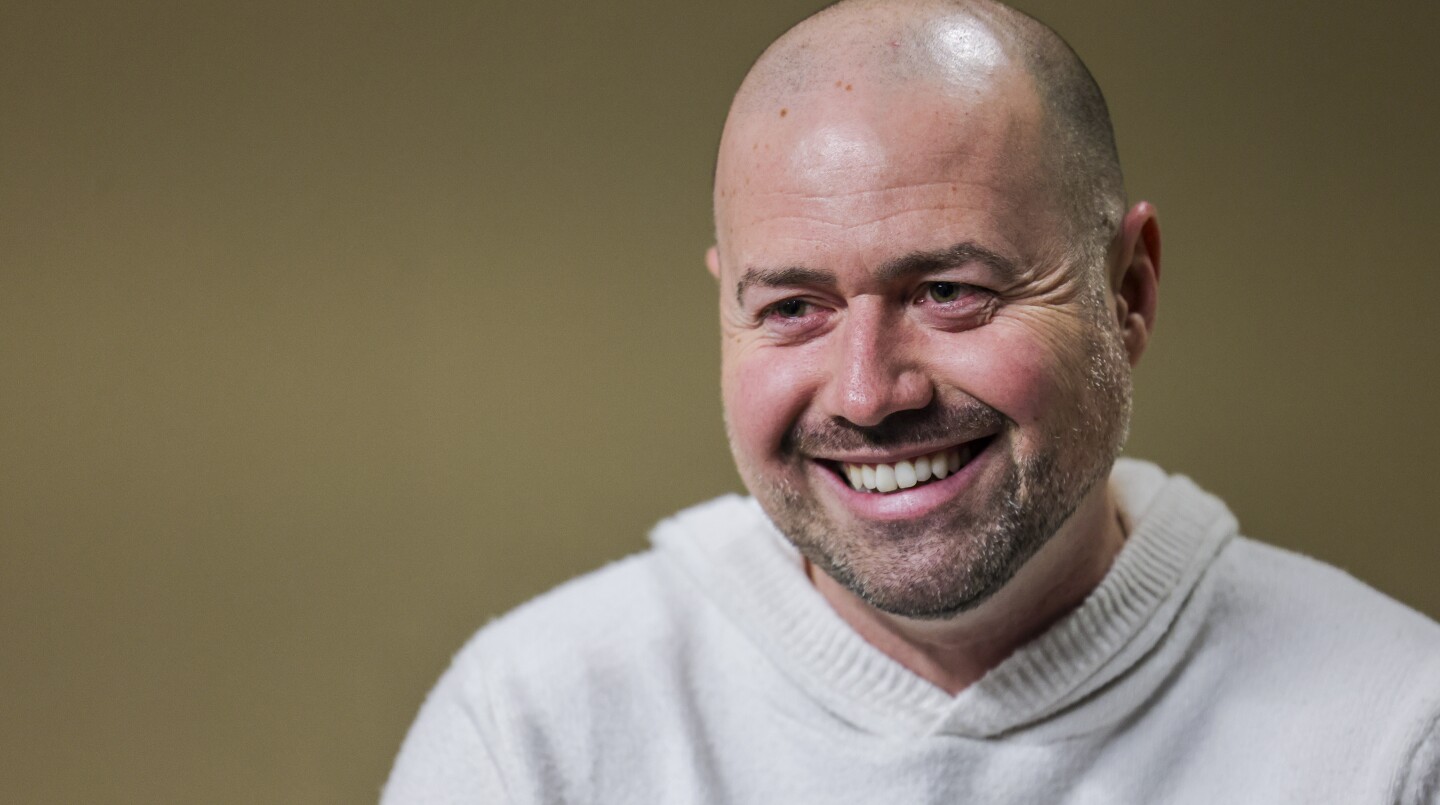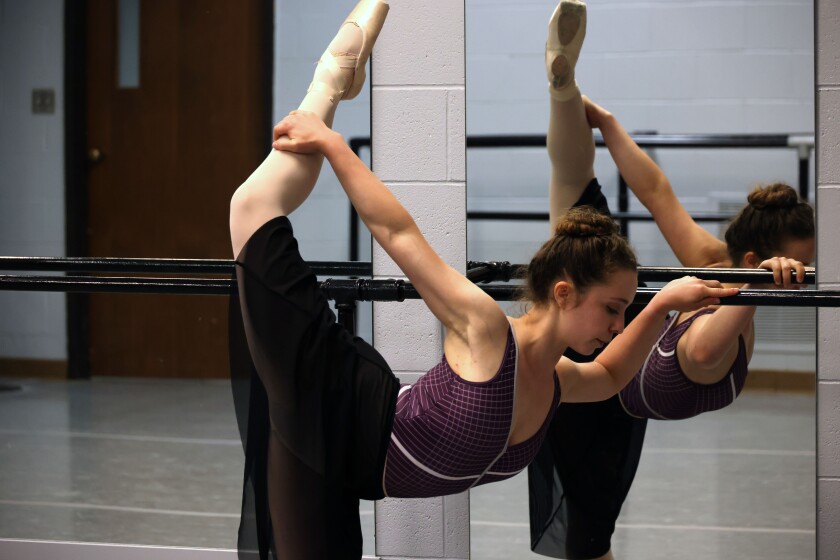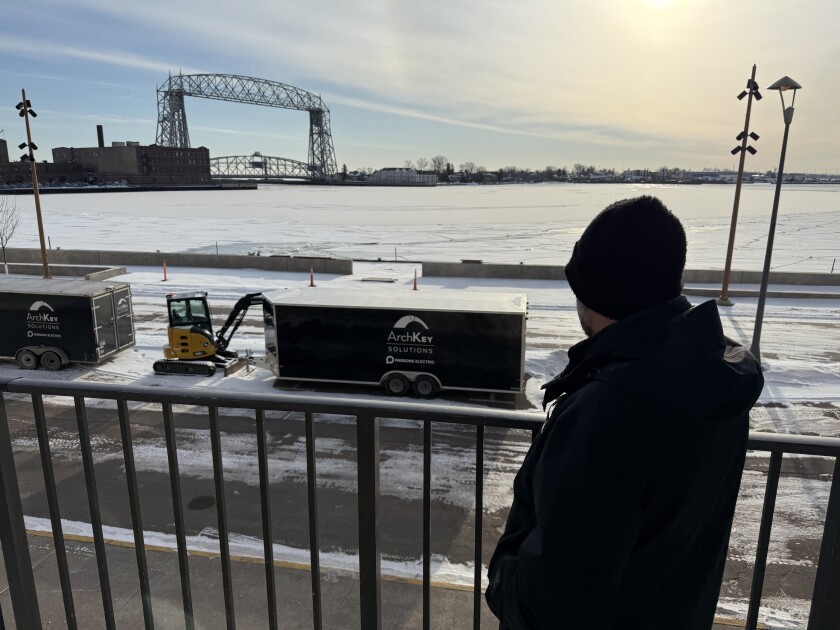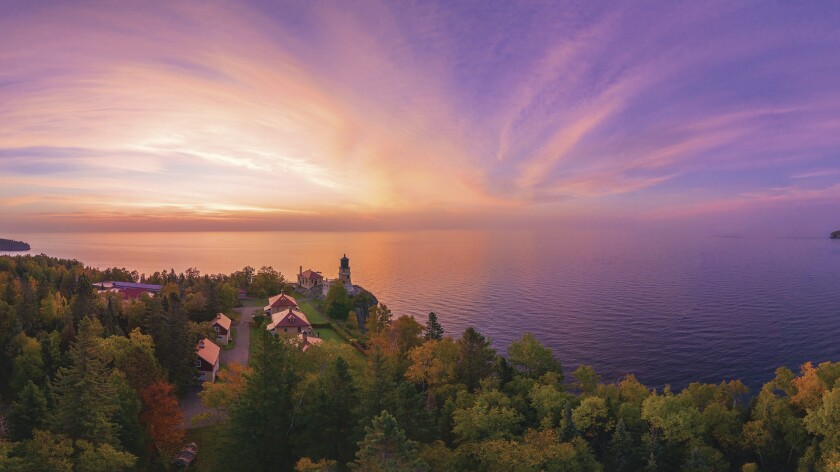DULUTH — By the time talk turned to the legend of the sauna elf, nothing could have surprised me.
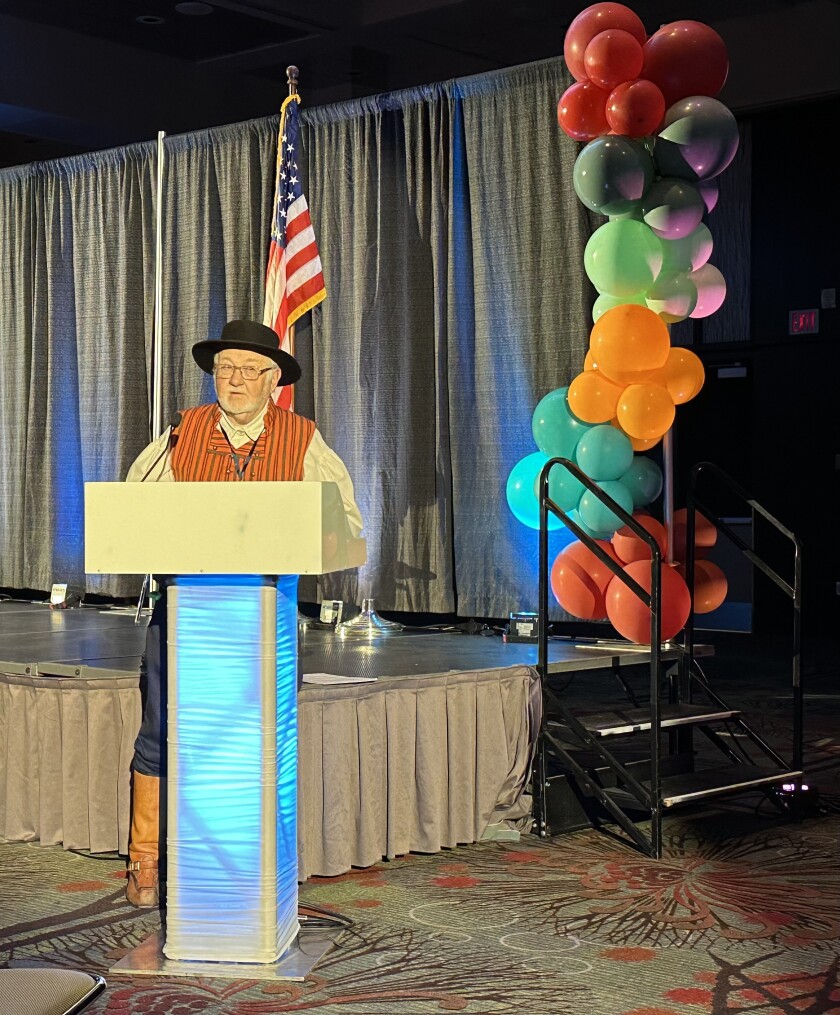
I had just finished eating a box lunch while standing at a cocktail table with architect David Salmela and sauna historian Frank Eld, who was wearing the traditional garb of Finland's Pohjanmaa region. The two helped unpack some of what I'd heard during the first three hours of a daylong Sauna Seminar held at the Duluth Entertainment Convention Center's Lake Superior Ballroom on Thursday, July 25, as part of FinnFest.
ADVERTISEMENT
Eld, for example, addressed the speakers' mockery of hotel saunas that disallow steam — or "löyly," as steam is called in a sauna context.
"There is no such thing as a dry sauna," said Eld, speaking slowly to be certain I understood. No löyly? It's not sauna.
Eld, during a postprandial presentation titled "A Savusauna Tour and Finnish Sauna Mythology," detailed the sometimes mischievous habits of the sauna elves, known as saunatonttu.
"They protect you; they protect the sauna. They are the spirit of your ancestors in the sauna. But you don't want to tick them off," Eld explained. If you disrespect the sauna, your elf may punish you with actions up to and including burning your sauna down.
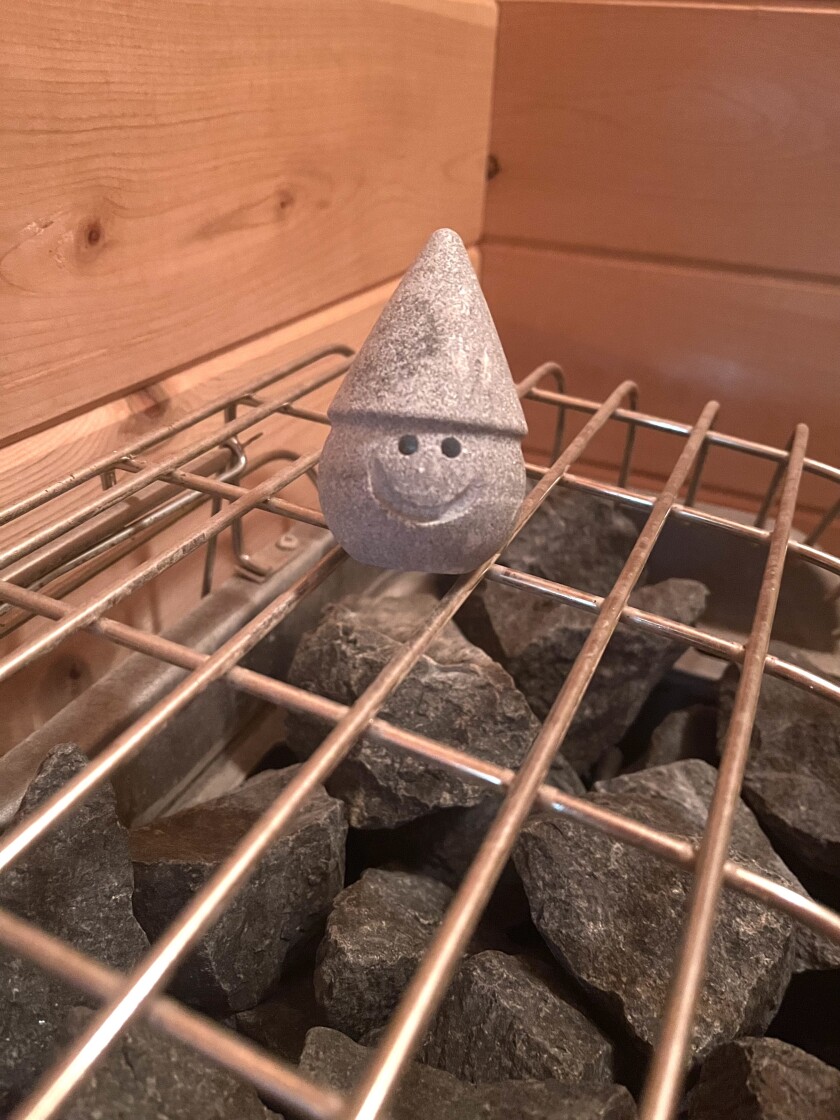
Respect for sauna was a theme throughout the day. In addition to the rueful mentions of misbegotten dry "saunas," one horror story involved a guy at a fitness center who started doing jumping jacks in the sauna.
"Ventilation can only do so much," said Walker Angell, who was presenting on "The Importance of Ventilation in a Sauna." If you start feeling lightheaded in a sauna, Angell pointed out, chances are that's your body responding not to the heat, but to the rising level of carbon dioxide that's been produced by you and your sauna friends.
Angell displayed an array of diagrams with arrows indicating airflow in various sauna ventilation schemes. I felt like I was back in college, where for a semester I studied aerospace engineering. By the end of the presentation, I understood why sauna benches are so high and deep, and why the ceiling must slant, if at all, upward toward the bench.
ADVERTISEMENT
"This is sauna!" read the label on a diagram of a figure sitting in a perfect "löyly pocket," enveloped from head to toe in a consistent bath of heat and steam. If your head is warm but your feet are cold, that's a poorly designed sauna. Germans, Angell said, especially hate cold feet.
The first half of the day was heavy on technical content, including in an opening talk livestreamed from Finland.
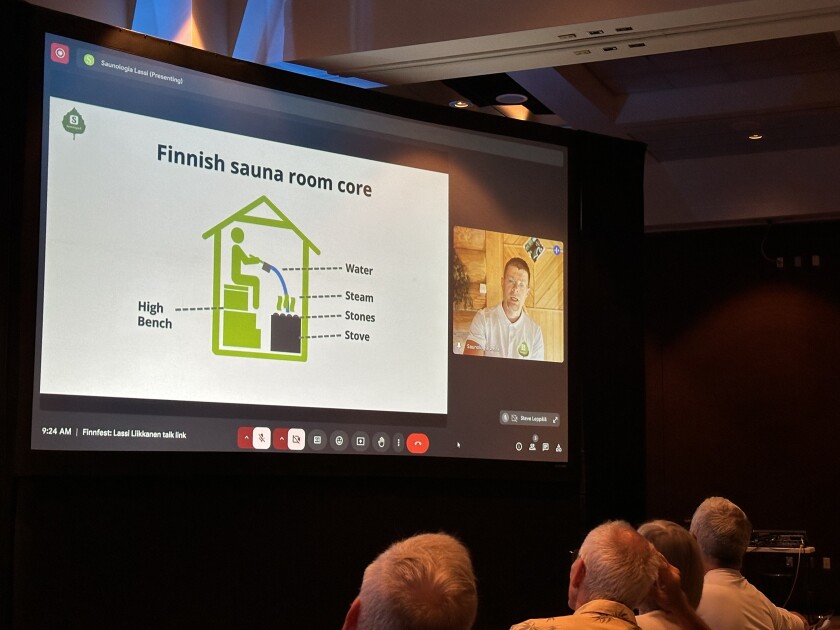
Lassi Liikkanen, author of the book "The Secrets of Finnish Sauna Design," addressed questions like how big a sauna should be (5 by 7 feet, minimum), how many rocks to put on the stove (at least 66 pounds' worth, but "more is not necessarily better") and how to obey the all-important "Law of Löyly" (both bench and footrest must be above the stove).
The approximately 50 attendees were a little perplexed by Liikkanen's joke about the future of sauna on Mars, but they warmed up a little when he displayed a meme featuring Boromir of "Lord of the Rings" that read, "One does not simply design user experience."
The day's biggest laugh, though, went to co-organizer Steve Leppälä, who spoke up during John Rajala's presentation on different types of trees used for sauna construction. "Basswood makes good ass wood," Leppälä declared.
For all the discussion of the sauna interior, I was surprised at how little talk there was of what you do on the exterior — traditionally, plunge into cold water. Over lunch, Eld told me that's because sauna practice has departed from how Finns have done it for centuries.
In the old days, Eld said, saunas would be built next to bodies of water and it went without saying that everyone would sauna and everyone would plunge. Now, a sauna on Lake Superior is a novelty.
ADVERTISEMENT
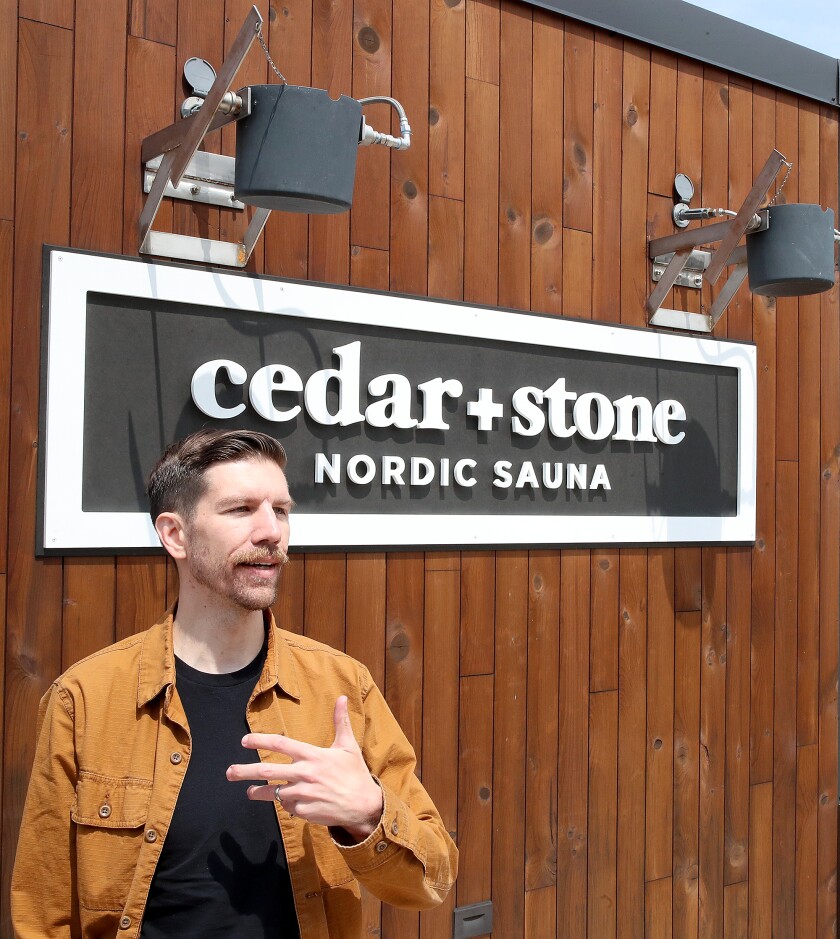
That's something Justin Juntunen is working to change. His talk, the last I attended July 25, addressed what his Duluth company, Cedar + Stone Nordic Sauna, is doing to bring back the tradition of the public sauna.
"We all have kitchens in our houses," Juntunen pointed out. "I bet all of you recently have also gone to a restaurant." There's a quality to the communal experience that you can't easily replicate at home.
A lot of our country's poor sauna practices — too small, too private, no löyly — stem from a 1960s sauna boom that did for sauna what McDonald's did for hamburgers. Christopher Rice, host of not one but two sauna podcasts, told that story in a historical presentation describing the career of Cecil "Mr. Sauna" Ellis, who introduced many Americans to the idea of installing an in-home sauna.
Ellis himself, though, voiced concern that "our genius for efficiency and oversimplification may lead to an adulteration of sauna’s time-honored customs and benefit." That's exactly what happened, according to the Sauna Seminar presenters, when people started to get the idea that a sauna is just a hot box.
For the Finns, said Eld during his presentation, sauna has long been seen as literally magic, resonating with folk beliefs about the importance of a liminal space between worlds.
Traditional Finnish savusaunas, which lack chimneys (the smoke gets cleared out before people enter), were relatively hygienic spaces and thus used for everything from childbirth to the dressing of corpses. You came into the world in a sauna, and you went out the same way.
If you've ever used a sauna during a bachelorette party, you were perhaps unknowingly following a time-honored Finnish tradition in which brides-to-be sat on prickly juniper boughs to prepare them for "the hard times" ahead, according to Eld.
ADVERTISEMENT
Juntunen put a 21st-century spin on the benefits of sauna.
"We actually have the chance to create a more human, more robust, more healthy, more joyful society," he said. Cultures around the world have practiced "therma-bathing," but "the Finns got lucky," and sauna became the word most broadly applied to the practice in all its contemporary forms.
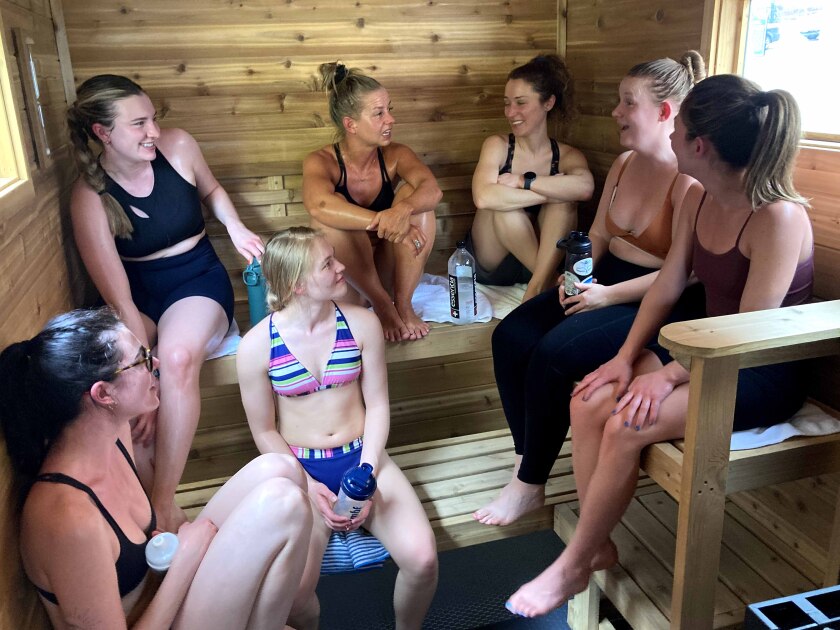
I found myself speculating that other cultures probably aren't lining up to have their own practices' names slapped on those sad, lukewarm dry boxes at hotel pools. The Finns may not love it either, but Americans will probably always call those things "saunas" — and pronounce the word saw-nuh.
Universally, everybody at the Sauna Seminar pronounced the word in true Finnish fashion: "sow-na." Juntunen admitted there's a temptation for sauna lovers to correct people who say it the wrong way, but he recommended against that.
"Reprimand is tough. It doesn't change hearts and minds," said Juntunen. "You know what does? Inviting people. When they see, feel and experience it, they're asking, 'Why do you say that word different? Tell me more.'"







